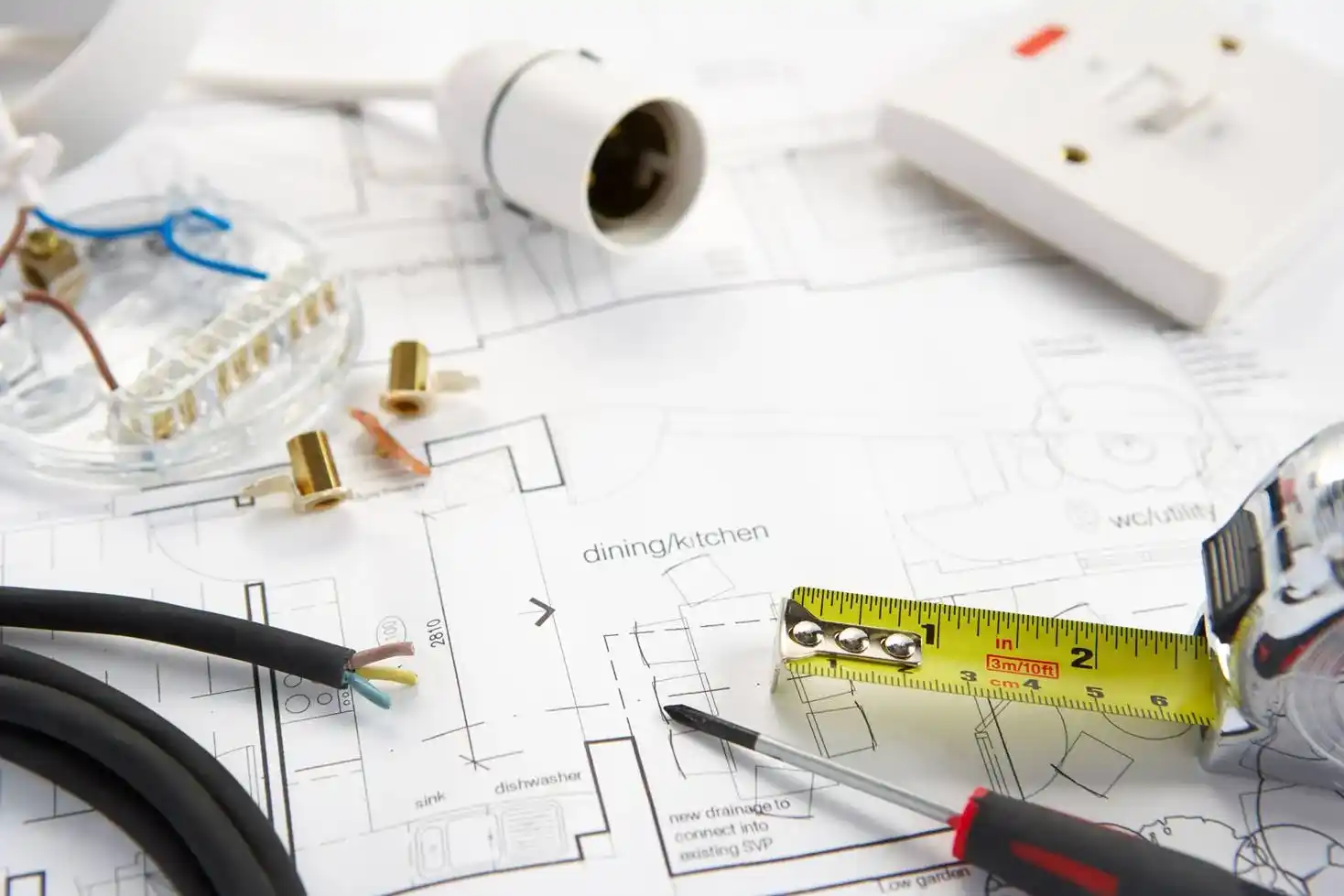Many numerical indicators have been developed to describe the performance of heating and cooling equipment, and they provide a reliable basis to compare products. These metrics also allow a quick estimation of running costs for a specific piece of equipment.
When comparing HVAC equipment based on their performance metrics, there are two main guidelines to consider:
- Different metrics cannot be compared with each other.For example, two air conditioning units with a SEER rating can be compared directly, but this is not possible if one has a SEER rating and the other has a COP (Coefficient of Performance). In this case, one of the values must be compared before comparison.
- When conversion from one metric to another is not possible, equipment can be compared based on an estimation of running costs. For example, combustion-based appliances often have an AFUE (Annual Fuel Utilization Efficiency) value. The AFUE is not valid for heating equipment that runs on electricity, so the comparison must be based on costs.
With respect to the operating costs of heating and cooling equipment, keep in mind that performance metrics only provide estimates. For a precise heating and cooling load analysis it is necessary to carry out energy modeling, which accounts for several factors such as the yearly weather profile, operating schedules and building envelope conditions.
Energy Efficiency Ratio (EER) and Seasonal Energy Efficiency Ratio (SEER)
The EER and SEER are used for air-conditioning equipment, and both represent a ratio of cooling output in BTU to heating input in watt-hours. The metrics can also be used for heat pumps capable of running in cooling mode.
Although both the EER and SEER have units of BTU per watt-hour, there are important differences in how each value is determined; different pieces of equipment can only be compared if efficiency is reported with the same metric.
Energy Efficiency Ratio (EER)
The EER is a ratio of cooling output in BTU to electric energy input in watt-hours, for a fixed set of operating conditions:
- Indoor temperature: 80°F
- Outdoor temperature: 95°F
- Relative humidity: 50%
Although the EER allows a direct comparison between different air conditioning systems, it cannot provide a reliable estimate of running costs. The EER is determined for a fixed temperature difference and relative humidity value, and these are conditions that show significant variation throughout the cooling. The Seasonal Energy Efficiency Ratio (SEER) provides a better estimate of actual performance, accounting for outdoor temperature variation.
Seasonal Energy Efficiency Ratio (SEER)
The SEER is like the EER, with the difference that it averages performance across a range of outdoor temperatures that is typical of the cooling season. When the running costs of air conditioning equipment are calculated with the SEER, a more realistic estimate is obtained, although it is still far from the precision offered by energy modeling.
Since 2006, all air conditioning systems manufactured in the USA must have a minimum SEER value of 13. If a manufacturer wants to receive the ENERGY STAR label for one of its products, the efficiency value must be within the top 25%. In addition, the ENERGY STAR label is only available for technologies that meet the following requirements:
- Split-type central air conditioner: SEER ≥ 15, EER ≥ 12.5
- Single-package central air conditioner: SEER ≥ 15, EER ≥ 12
The most efficient mini-split type AC units that run 100% on electricity offer SEER values above 28. Some units deploy solar power to boost the SEER above 35.
Upgrading to an AC Unit with a Higher SEER
There is a simple and convenient formula that can be used to estimate the energy savings when upgrading an air conditioning unit:
Percentage Savings=(1-(Current SEER)/(New SEER))x100%
For example, upgrading a first-generation SEER 10 mini-split system to a modern SEER 25 unit would yield the following savings:
Percentage Savings=(1-10/25)x100%=60%
Keep in mind that this quick formula only applies if the rated cooling output and operating schedules will remain the same after the upgrade. Otherwise, the energy consumption in kilowatt-hours must be calculated separately for the existing and projected running conditions.
Integrated Energy Efficiency Ratio (IEER)
The water-cooled and evaporative air conditioning systems used in commercial and industrial settings operate very differently from the smaller units found in homes and small businesses, and the SEER does not provide a reliable metric to describe their performance.
These AC systems are subject to varying load conditions and rarely operate at peak capacity, so the energy efficiency at 100% load does not represent actual operating efficiency. To address this, the Air-Conditioning Heating and Refrigeration Institute (AHRI) developed the IEER and provided a procedure to calculate it. The IEER was previously known as the IPLV, or Integrated Part-Load Performance.
Step 01: Part-Load Efficiency Values
The normal EER is calculated at 100%, 75%, 50% and 25% load. Outdoor air temperature is reduced proportionally for each load percentage, to reflect the fact that less cooling is required.
- A = 100% load EER at standard outdoor temperature (95°F)
- B = 75% load EER at reduced temperature
- C = 50% load EER at reduced temperature
- D = 25% load EER at reduced temperature
ANSI/AHRI Standard 210/240 provides the temperature value for each of the part-load conditions, depending on AC system characteristics.
Step 02: Calculating the EER
Once all four EER values have been calculated, the IEER is calculated according to the following formula provided by AHRI:
IEER=0.02A+0.617B+0.238C+0.125D
Note how the coefficient is only 0.02 for the full-load efficiency (A) and higher for part-load conditions (B, C and D). This accounts for the fact that commercial and industrial AC systems operate at part load for extended periods of time.
Heating Seasonal Performance Factor (HSPF)
The HSPF can be considered analogous to the SEER, with the difference that it applies for heat pumps in heating mode only; during the cooling season, the performance of heat pumps is described by the SEER, just like air conditioning equipment. It is important to note that reversible heat pumps require a different metric in each operating mode, and they cannot be interchanged although they are describing the same piece of equipment:
- The HSPF is exclusive for heating mode.
- The SEER is exclusive for cooling mode.
When purchasing a reversible heat pump, compare your heating and cooling loads throughout the year. If you use heating more, focus on the HSPF; for cooling, focus on the SEER.
Air-source heat pumps are the most common type in residential settings, and they must meet the following criteria to receive the ENERGY STAR label:
- Split-type heat pump: HSPF ≥ 8.5
- Single-package heat pump: HSPF ≥ 8.2
It is important to note that heat pumps in must also meet EER/SEER requirements in cooling mode to be eligible for the ENERGY STAR label. Since the efficiency of heat pumps tends to decrease as outdoor temperatures become colder, the minimum HSPF requirements are less stringent that those for the SEER and EER.
Annual Fuel Utilization Efficiency (AFUE)
The AFUE is used exclusively for combustion-based appliances such as boilers and furnaces, and it is the ratio of effective heating output to the total energy contained in the fuel consumed. According to the Department of Energy, old units tend to have an AFUE under 70%, while efficient boilers and furnaces reach up to 98.5%. Furnaces and boilers are also eligible for the ENERGY STAR rating if they meet the following criteria:
- The minimum AFUE of gas furnaces is 95% for northern states, and 90% for southern states, where ENERGY STAR determines the states in each category. The minimum AFUE of oil furnaces is 85%. In all cases, fan power consumption must be kept below 2% of total furnace energy consumption, and air leakage must remain under 2% of total airflow.
- The minimum AFUE for boilers if 87% if gas-fired, and 90% if oil-fired.
Keep in mind that you cannot compare the AFUE of a combustion-based appliance with the HSPF of a heat pump. In this case, you would have to estimate the yearly running costs, comparing the cost of the fuel consumed by the boiler or heater with the cost of the electricity consumed by the heat pump.
Coefficient of Performance (COP)
The COP is a ratio of thermal output (heating or cooling) to energy input, and therefore it can be used to describe any heating or cooling appliance. Keep in mind, however, that reversible heat pumps have a separate COP for each mode of operation, which correspond to the HSPF and SEER. Different pieces of equipment can be compared based on their COP it they run with the same energy source.
- For example, you can conclude that a heat pump with a COP of 3.0 is less expensive to operate than a resistance heater with a COP of 1.0 – the energy source has the same cost in both cases.
- However, the same cannot be said if you are comparing the heat pump with a gas heater that has a COP of 0.80 – the energy source is different for each piece of equipment.
ENERGY STAR requirements are generally specified in terms of HSPF, SEER and AFUE, but equivalent COP values are typically provided as well. Any of these performance metrics can be converted into an average COP, but it is important to consider energy source differences before proceeding with any comparison; the COP is an energy conversion ratio that does not account for the unit cost of the energy source (electricity, oil or gas).
Energy Factor (EF)
The energy factor is a ratio of heating output to energy input, and is normally used in water heating applications. Although in theory it could be used to describe space heating as well, the practice is not commonplace – the HSPF, AFUE and COP are preferred. Generally, the EF is used to describe:
- Storage water heaters
- Instantaneous or tankless water heaters
- Heat pumps water heaters
The EF of a heating system describes overall performance, accounting for energy conversion efficiency, but also considering standby losses and cycling losses. The metric also applies for dishwashers, clothes washers and clothes dryers, but it is defined differently for each case.
Just like air conditioners and space heating devices, water heaters are eligible to receive the ENERGY STAR label if they meet a minimum EF, along with other requirements that are specific for each technology. Residential water heaters must offer the following EF to receive the label:
| Water Heater Type | Minimum Energy Factor (EF) |
| Storage Heater, Electric, ≤ 55 gal | 2.00 |
| Storage Heater, Electric, > 55 gal | 2.20 |
| Storage Heater, Gas, ≤ 55 gal | 0.67 |
| Storage Heater, Gas, > 55 gal | 0.77 |
| Tankless Heater, Gas | 0.90 |
| Solar* Heater, Electric Backup | 1.80 |
| Solar Heater, Gas Backup | 1.20 |
*For solar heaters, only electric or gas energy input is considered when calculating the energy factor. Solar heat is excluded because it is essentially free.
Concluding Remarks
Heating and cooling equipment can be compared with ease if all key performance metrics are understood. It is important to note, however, that only energy modeling provides a precise estimation of operating costs. To achieve the best results with any HVAC project, make sure you hire the services of a qualified engineering consultant or firm. When HVAC equipment is purchased based on “rules of thumb”, the resulting performance is generally poor.







